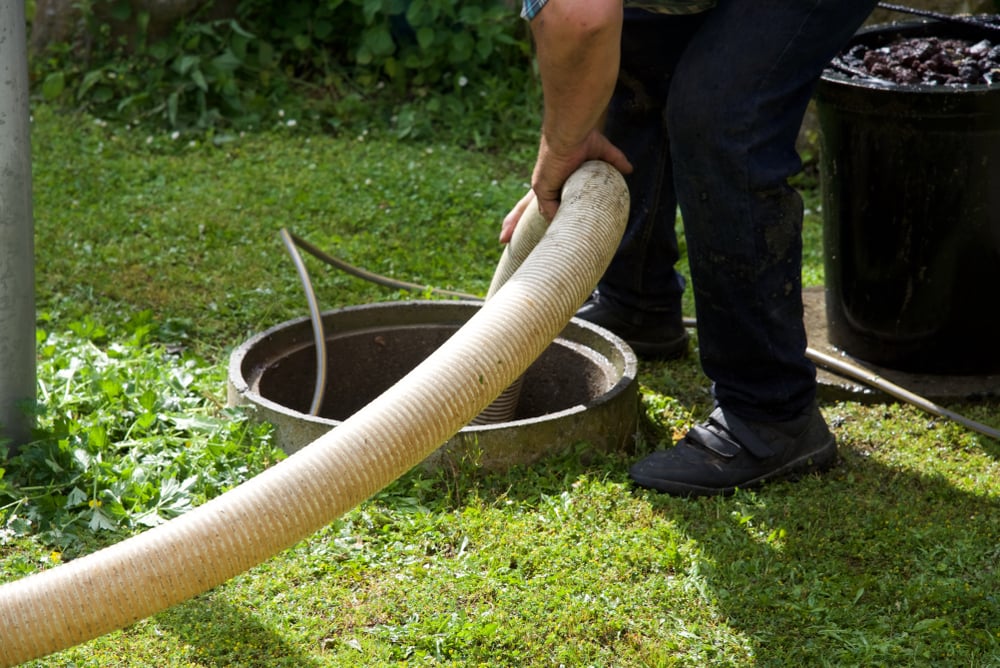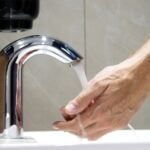
Understanding the Permitting Process for Septic Tanks in Santa Cruz
Introduction to Septic Systems in Santa Cruz
In the picturesque San Lorenzo Valley of Santa Cruz County, homeowners often rely on septic systems for onsite wastewater treatment. Understanding the septic tank process in Santa Cruz is crucial for maintaining environmental health and ensuring the longevity of these systems. A septic system is more than just a tank; it’s a complete onsite wastewater treatment system that requires careful planning, installation, and maintenance. In Santa Cruz County, where the water table can directly impact the functionality of a septic system, it’s essential to adhere to the proper septic permits process to protect the community’s water resources.
The Importance of Septic Permits
Securing a septic permit is not merely a bureaucratic step; it’s a safeguard for public health and the environment. Septic permits are a testament to a homeowner’s commitment to responsible stewardship of their property and the surrounding ecosystem. In Santa Cruz County, the permitting process ensures that each septic tank and system is designed and installed according to stringent regulations that consider local conditions, such as the water table and soil composition, which can greatly affect the system’s efficiency and safety.
When to Obtain a Septic Permit in Santa Cruz
Whether you’re installing a new septic tank, upgrading an existing system, or conducting significant repairs, a permit is essential. In Santa Cruz, the process begins with a clear understanding of when a permit is required. For instance, if your septic tank needs to be pumped or if you’re performing routine septic system maintenance, you may not need a new permit. However, changes in tank size, location, or alterations to the leach field will likely necessitate a visit to the Santa Cruz County Environmental Health office. It’s also important to note that different areas, such as the San Lorenzo Valley, may have specific requirements due to their unique environmental conditions.

Step-by-Step Guide to the Septic Permitting Process
The septic tank permitting process in Santa Cruz County is thorough and designed to ensure that all septic systems function properly and do not pose a risk to the environment or public health. Here’s a step-by-step guide to navigating the process:
- Initial Consultation: Start by consulting with a local septic system professional who understands the specific requirements of Santa Cruz County. They can provide valuable insights into the process and help you avoid common pitfalls.
- Site Evaluation: A certified professional must conduct a site evaluation. This assessment will consider the water table, soil type, and other environmental factors to determine the appropriate tank size and system design for your property.
- Application Submission: With the information from your site evaluation, you can complete the septic permit application. This will include detailed plans of your proposed system, proof of property ownership, and any other documents required by Santa Cruz County.
- Review Process: Once submitted, the Environmental Health department will review your application. They may request additional information or modifications to your plan to ensure compliance with local regulations.
- Permit Approval: If your application meets all the requirements, you’ll be issued a septic permit. This document will outline any conditions or limitations related to the installation and use of your septic system.
- Installation: With your permit in hand, you can proceed with the installation of your septic system. It’s crucial to use a licensed contractor who will adhere to all the specifications outlined in your permit.
- Final Inspection: After installation, a final inspection by the Environmental Health department is necessary. They will verify that the system has been installed correctly and functions as designed.
- – Ongoing Maintenance: Even after your system is up and running, septic system maintenance is vital. Regular inspections and having your septic tank pumped as needed will keep it functioning effectively for years to come.
By following these steps, homeowners in Santa Cruz County can navigate the septic tank permitting process with confidence, ensuring their system is installed correctly and in compliance with local regulations. This not only protects the environment but also ensures the longevity and efficiency of the septic system, saving homeowners from costly repairs or replacements down the line.
Required Documentation for Onsite Wastewater Treatment Systems
When it comes to onsite wastewater treatment systems in Santa Cruz, the paperwork can be as dense as the redwood forests of Boulder Creek. But fear not, the process is navigable with the right information. To get approved, you’ll need to provide detailed site plans that show the location of your house, the proposed septic system, including leach fields, and any significant landscape features like tree roots that could interfere with the system. Documentation must also include a soil analysis report, which is particularly important in areas with a high water table. This report will help determine if the ground can adequately filter sewage, a crucial factor in protecting groundwater.
Understanding Site Evaluation
A site evaluation is more than just a formality; it’s a comprehensive assessment that ensures your septic system won’t turn your backyard into a swamp. In areas like Boulder Creek, where the high water table is a concern, the evaluation will focus on how quickly the ground absorbs water. This is where leach fields come into play. They are the unsung heroes of wastewater treatment, allowing water to percolate back into the soil. But if tree roots or boulders are in the way, they can impede this process. The evaluation will also determine the necessary size of the tank and the pump system, ensuring that sludge and scum don’t escape into the environment.
Navigating Santa Cruz County Regulations
Santa Cruz County’s regulations are as varied as its landscapes. From the sandy shores to the forested hills of Boulder Creek, each area has its own set of rules. For instance, a high water table might mean stricter requirements for leach fields to prevent sewage from contaminating groundwater. Getting your system approved might feel like climbing a mountain, but with the right preparation, it’s entirely achievable. You’ll need to ensure that access to your septic system is clear for maintenance and that it meets the specific environmental standards set by the county supervisors. The cost of non-compliance can be steep, leading to repairs that are as costly as they are stressful.
The Role of Environmental Health in the Permitting Process
The Santa Cruz County Environmental Health department is like a lighthouse guiding ships safely to shore. They ensure that your onsite wastewater treatment system doesn’t harm the environment or public health. They’ll check everything from the distance of your septic tank to tree roots, to the elevation of your leach fields relative to the high water table. If you’re in Boulder Creek, they’ll pay particular attention to how your system will function amidst the dense forest and rocky terrain. Once your system is approved and installed, they’ll need to pump out the access point to check for sludge levels, ensuring everything is running smoothly. Remember, the cost of these regular check-ups is a small price to pay for a system that works efficiently and keeps your ground and house free from sewage mishaps.
Gathering Materials and Filling Out Forms
For residents of Santa Cruz looking to install or replace a septic system, gathering the right materials and filling out the necessary forms is the first tangible step in the process. This paperwork solidifies your intent and sets the stage for the work to come. You’ll need to collect technical specifications of the proposed system, including capacity and materials, to ensure they meet county standards. The forms, which can be obtained from the Santa Cruz County Environmental Health office, will ask for detailed information about your property and your current wastewater management system. Completing these forms accurately is the responsibility of the homeowner and is crucial for avoiding delays in the approval process.
Understanding the Costs Involved
The costs associated with installing or upgrading a septic system in Santa Cruz can vary widely. These expenses include not only the materials and labor required to install the system but also the fees for permits and inspections. Residents should be prepared for these costs and consider them as an investment in their property’s value and in the protection of the local environment. It’s also wise to factor in potential costs for repairing leaks or other issues that might arise during the installation process. While it can be tempting to cut corners to save money, doing so can lead to greater expenses down the line if the system fails to meet regulatory standards or requires premature replacement.
Dealing with Leaks and Capacity Issues
Leaks in a septic system can lead to significant environmental and property damage, and addressing them is a key responsibility of the homeowner. If leaks are detected during the inspection process, they must be repaired promptly to prevent contamination of the soil and groundwater. Additionally, ensuring that your septic system has the capacity to handle your household’s output is crucial. An undersized system can become overwhelmed, leading to leaks and system failure. Residents must work with qualified professionals to assess their needs and install a system with adequate capacity.

The Installation Process
Installing a new septic system is a complex process that involves multiple steps and careful coordination. It begins with preparing the site, which may include clearing vegetation and grading the land. The materials for the system are then brought in, and the tank and leach field are installed according to the approved design. Throughout this process, it’s the responsibility of the homeowner to ensure that the installation complies with all county regulations and that the work is performed by licensed professionals. After the system is installed, it must be filled with water to check for leaks and to prepare it for the final inspection.
The Homeowner’s Responsibility
The responsibility of maintaining a septic system does not end once the installation is complete. Homeowners must regularly inspect their system for leaks, ensure that the tank is pumped at the recommended intervals, and avoid disposing of materials that could clog or damage the system. They must also be aware of the signs of a failing system, such as slow drains or sewage backups, and take immediate action to address these issues. Proper maintenance not only extends the life of the septic system but also protects the health of the community and the environment.
In summary, understanding the permitting process for septic tanks in Santa Cruz is essential for any homeowner who needs to install or replace their system. From gathering the correct materials and filling out forms to understanding the costs, dealing with leaks, and ensuring the system has the right capacity, each step is important. The installation process must be carried out with precision and care, and the ongoing responsibility for the system’s maintenance rests on the homeowner’s shoulders. By taking these responsibilities seriously, residents of Santa Cruz can ensure that their septic systems function effectively and safely for years to come.







